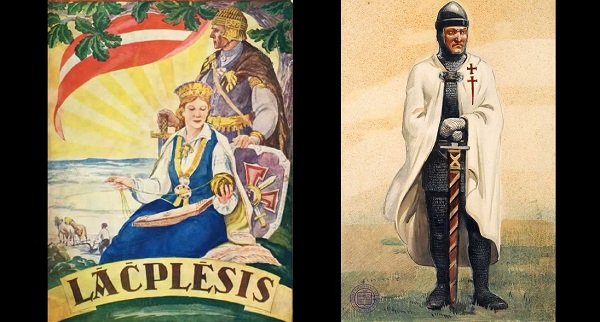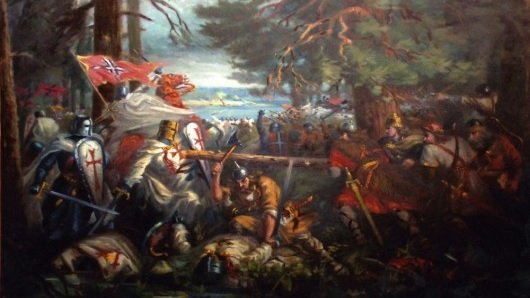For several millennia the Baltic tribes such as Latvians lived away from the major European conflicts and migrations. They would own wooden castles and sometimes fight each other, but had little relations with the world beyond them.

That changed by 1100s. Scandinavia was converted to Christianity and Balts thus remained the final major heathens of Europe. German elite was keen to change this, sending missionaries and monks to the Baltic lands. Some of them established cities and asserted political power. As the Crusades in the Middle East were defeated, thousands of German knights also moved to the Baltic lands hoping to at least expand Christianity there. They established Livonian Order (1204) which gradually consolidated vast swatches of modern-day Latvia throughout the 13th century.

Other Latvian areas fell under the rule of various German bishops who enjoyed secular powers in addition to the usual religious ones (the greatest bishopric was located in Riga). Latvia was officially named „Land of Virgin Mary“, fitting its numerous theocracies. Latvian peasants gave in, becoming Christians. They continued to work their land and pay taxes to the new overlords who sawn their lands with formidable brick castles and cities of size and modernity they never witnessed before.

The twisted boundaries between the Order and bishoprics would sometimes lead into conflicts between the two powers, but the new primary “conquest goal” of these military-religious statelets lied further south. Southern Baltic tribes refused to Christianise, establishing a powerful Grand Duchy of Lithuania that successfully resisted Crusader onslaughts.

After two centuries of war Lithuania Christianised but the Order, too used to live off military bounty in the seemingly endless crusade, refused to leave. However, a series of defeats (not even stemmed by a Order-Bishoprics unification at 1435) would sink the Order into oblivion. All the German states of modern-day Latvia have been conquered by their arch-enemies Lithuanians (allied with Poles) by 1562. The Orders had secularized and converted into Lutheranism shortly beforehand, making Lutheranism the Latvia’s major faith ever since.


2 thoughts on “German crusader states (until 1561)”